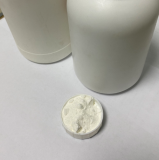- Category :
Laboratory Chemicals
- CAS NO :
- EC NO :
- Molecular Formula :
- Main Specifications :
- Synonyms :
Product description:
The buffer solution is a water-based solution containing a weak acid and its conjugate base. Due to the chemical nature of the buffer solution, even if the substance changes chemically, the buffer solution can maintain its pH (acidity) at an almost constant level. The buffer is naturally present in the plasma, and it keeps the blood pH between 7.35 and 7.45. In organic systems, natural buffers keep the pH at a consistent level. But in the process of biological research, the pH value must be kept constant through buffer. There are many kinds of buffers, and Tris buffer is one of the commonly used biological buffers.
What is Tris buffer?
Tris is the abbreviation for tris(hydroxymethyl)aminomethane, which is a compound commonly used in salt water because it is isotonic and non-toxic, with a pKa of 8.1 and a pH between 7 and 9, so Tris Buffer solutions are also commonly used in a series of chemical analysis and biological research, including DNA extraction. It is important to know that the pH value of the tris buffer solution will vary with the temperature of the solution.
How to prepare Tris buffer
The preparation of Tris buffer is very simple, only prepare the following materials
Tris(hydroxymethyl)aminomethane (TRIS)
Distilled deionized water
hydrochloric acid
step
1. First determine the concentration (molar concentration) and volume of the Tris buffer you want to make. For example, the Tris buffer solution used for physiological saline varies from 10 to 100 mM. According to the experimental requirements, calculate the required moles of Tris by multiplying the molar concentration of the buffer by the volume of the buffer being made. (The number of moles of Tris = mol/L x L)
2. Next, determine how many grams of Tris is by multiplying the number of moles by the molecular weight of Tris (121.14 g/mol). The number of grams of Tris = (mole) x (121.14 g/mol)
3. Dissolve Tris in distilled deionized water to reach 1/3 to 1/2 of the required final volume.
4. Mix in HCl (for example, 1M HCl) until the pH meter provides the required pH for your Tris buffer solution.
5. Dilute the buffer with water to reach the desired final solution volume.
 CN ChemNet > Gold Suppliers > Hubei new DE sheng material science and technology co., LTD. >
CN ChemNet > Gold Suppliers > Hubei new DE sheng material science and technology co., LTD. > 